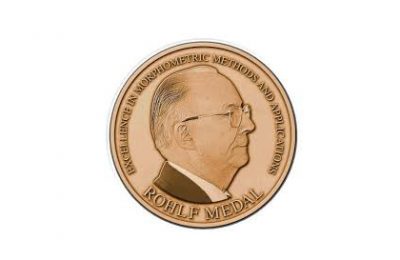2023 CALL FOR NOMINATIONS – The Rohlf Medal
The Rohlf Medal for Excellence in Morphometric Methods and Applications was established in 2006 by the family and friends of F. James Rohlf to mark his 70th birthday. He has been a longtime Stony Brook University faculty member and is currently Emeritus Distinguished Professor in the Department of Ecology and Evolution, and Research Professor in the Department of Anthropology. Recipients of the Rohlf Medal will be recognized for excellence in their sustained body of work on the development of new morphometric methods or for their applications in the biomedical sciences, including evolutionary biology, population biology, physical anthropology, and medicine. The term “morphometrics” is intended to include high-dimensional pattern analysis of biological form, especially those methods that analyze shape in a comprehensive way, or of covariation of shape with other variables. Additional details may be found on the Rohlf Medal website: https://tinyurl.com/RohlfMedalNom. Nominations may be made either by the nominee himself/herself or by a colleague. Nominations consist of a letter making the case for the nominee for the 2023 award. Nominees under full consideration by the committee may then be asked to provide additional materials as described on the website: https://tinyurl.com/RohlfMedalNom. Nominations must be submitted to that website by June 15, 2023. The successful candidate will receive the Rohlf Medal and a cash prize at Stony Brook University,…

